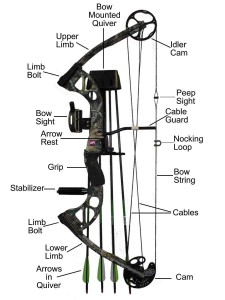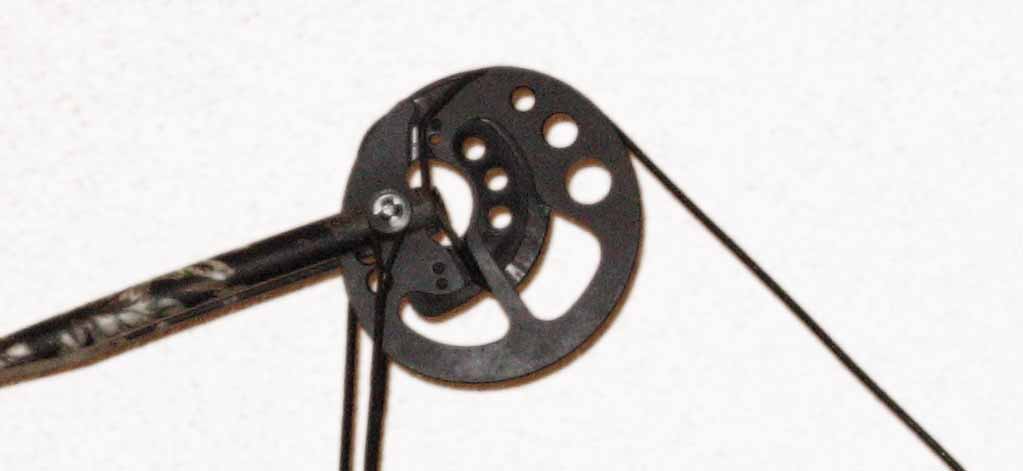Key terms
- Archery: this is the art shooting arrows using a compound bow
- Cam: this is the pulley of a compound bow
Audience and scope
The intention of this document is to offer archers with relevant information about compound bows. The document will illustrate compound bow as a product. With advancement in archery technology, the compound bows have become refined unlike the long bows.
Each of the diverse methods used in optimizing the performance of compound bows is based on fundamental physics principles. Therefore, the above document will provide the archers with general knowledge about how the tool operates. Consideration will be given to the product’s parts, advantages, uses, and models or styles. Through this, the document will illustrate how the component’s parts fit together and how they aid in the performance of the tool.
Introduction
Compound bows were first designed around 2 800 B.C. During this time, humans integrated the different components to come up with bows that are more efficient. It is alleged that the Egyptians had bows that could propel arrows for around 400 yards (Park 142). Each of the diverse methods used in optimizing the performance of compound bows is based on fundamental physics principles.
Compared to longbows, these products are less flexible. The product has strings connecting its cams (this are the pulleys of a compound bow) (Park 142). Peculiar pulleys on both limbs distinguish a compound bow. The utmost power required to represent the product at its maximum degree is referred to as the draw weight. The cams enable the tool to be positioned at full draw with minimal draw weight. Once the thread is pulled back, the cams revolve. As a result, the cams pull the cables.
Evolution of the design
Despite the fact that humans have utilized bows for thousands of years, it should be noted that its current design was adopted some few years ago. In the year 1969, Holless Wilbur Allen obtained exclusive rights to come up with a new design of compound bow (Park 142). The new design has the same function as a normal bow. As such, they both use arrows and are stretched to propel the arrows. However, it should be noted that the new design has more components and utilizes a number of physics principles. In general, the ancient bow is comprised of a strong stick that is bent and a string tied to both ends. On the other hand, the compound bow uses detachable parts, consisting of levering systems mainly cables and pulleys.

The parts of a compound bow
Below is a diagram of a compound bow illustrating its basic parts:

- Arrow Rest: The arrow rest is the part attached to a riser through the berger hole. It allows the user to catch the arrow in position before a shot.
- Arrow Shelf: The arrow shelf is the part on a riser that safeguards the absorbing hand from unintentional injury.
- Cable: this is the string connecting one limb to the other.
- Cable Guard The cable guard is made up of a fiberglass rod. It runs at a 90-degree angle from the riser to the bowstring (Zanevskyy 168). It functions together with the wire slide to ensure that the wire is not on the shot’s line.
- Cam: the compound bow has a wheel popularly called cam (Wise 13). However, each compound bow has a different cam because of the general design of the bow. The cams store energy.
- The berger hole: this is the gap positioned over the arrow shelf. It is required that an arrow be positioned at the centre of the gap when the bow is being prepared for a shot. Broad-heads are the sharp endings fastened to arrow ends.
- Limb: this is one of the two halves of a compound bow holding the cam in position. Once the cables are pulled, the limbs bend and store the required energy to propel an arrow.
- The riser: this is the part sandwiched by the limbs.


Advantages of compound bow
Compound bow’s limbs are more firm compared to those of other bows. The stiffness adds energy efficiency on the bow making it less strenuous to pull. Based on this, compound bow saves on excess energy wasted during a pull (Peter 15). The strings are fastened on cams. Pulley’s cables are fastened to the limb. With regard to its operation, the pulleys move when the string is drawn. When the draw is initiated, the archer achieves a little mechanical advantage. When the draw and the cam revolve, the radius distance increases. At this point, lesser force is needed to bend the limbs. As such, this is an advantage the product has over other similar products.
The handle system in the compound bow distinguishes it from other similar products. When the bow is strained, the force curve rises to an elevated peak weight. When released, it reduces to a lower holding weight (Hanson & Yuyi 44). The archer holds the cord for a longer period without being exhausted. This is a second advantage the product has over similar products. The compound bow is made in an advanced way to prevent temperature and humidity from affecting its performance. The above results from the tools used in making of the bow. The advantage associated with the tools is that they are lighter. Similarly, the tools ensure that accuracy is achieved in arching (Hanson & Yuyi 45).

Top manufactures and typical use
Notably, the products are used in archery. In the past, archery was used for hunting and battles. Currently, it is utilized in competitive games and leisure activities (Weintraub 23). The top manufactures of the product include Alpine, Athens, Bear, Ben Pearson, Bowtech, Browning, and Darton. The above companies produce the best compound bows in the market.
Conclusion
In conclusion, it should be noted that compound bow is still relevant to date. The compound bow has the same function as a normal bow. As such, they both use arrows and are stretched to propel the arrows. Each of the diverse methods used in optimizing the performance of compound bows is based on fundamental physics principles. Therefore, the above document will provide the archers with general knowledge about how the tool operates.
Works Cited
Hanson, Andrew Joseph, and Yuyi Lin. Kinematic analysis of cam profiles used in compound bows. Columbia, Mo.: University of Missouri, Columbia, 2009. Print.
Park Larry. “A compound archery bow dynamic model, suggesting modifications to improve accuracy.” Proceedings of the Institution of Mechanical Engineers, Part P: Journal of Sports Engineering and Technology 223.4 (2009): 139-150. Print.
Peter Julio. “The behaviour of an arrow shot from a compound archery bow.” Proceedings of the Institution of Mechanical Engineers, Part P: Journal of Sports Engineering and Technology 225.1 (2011): 8-21. Print.
Weintraub, Aileen. Bow hunting. Mankato, Minn.: Capstone Press, 2004. Print.
Wise, Larry. On target for tuning your compound bow: high performance tuning for all cams, all compounds, target / field / bowhunting, 3D tuning / shooting for bowhunting, updated cam material. Mequon, WI: Target Communications Books, 2012. Print.
Zanevskyy, Ihor. “Compound archery bow asymmetry in the vertical plane.” Sports Engineering 15.3 (2012): 167-175. Print.